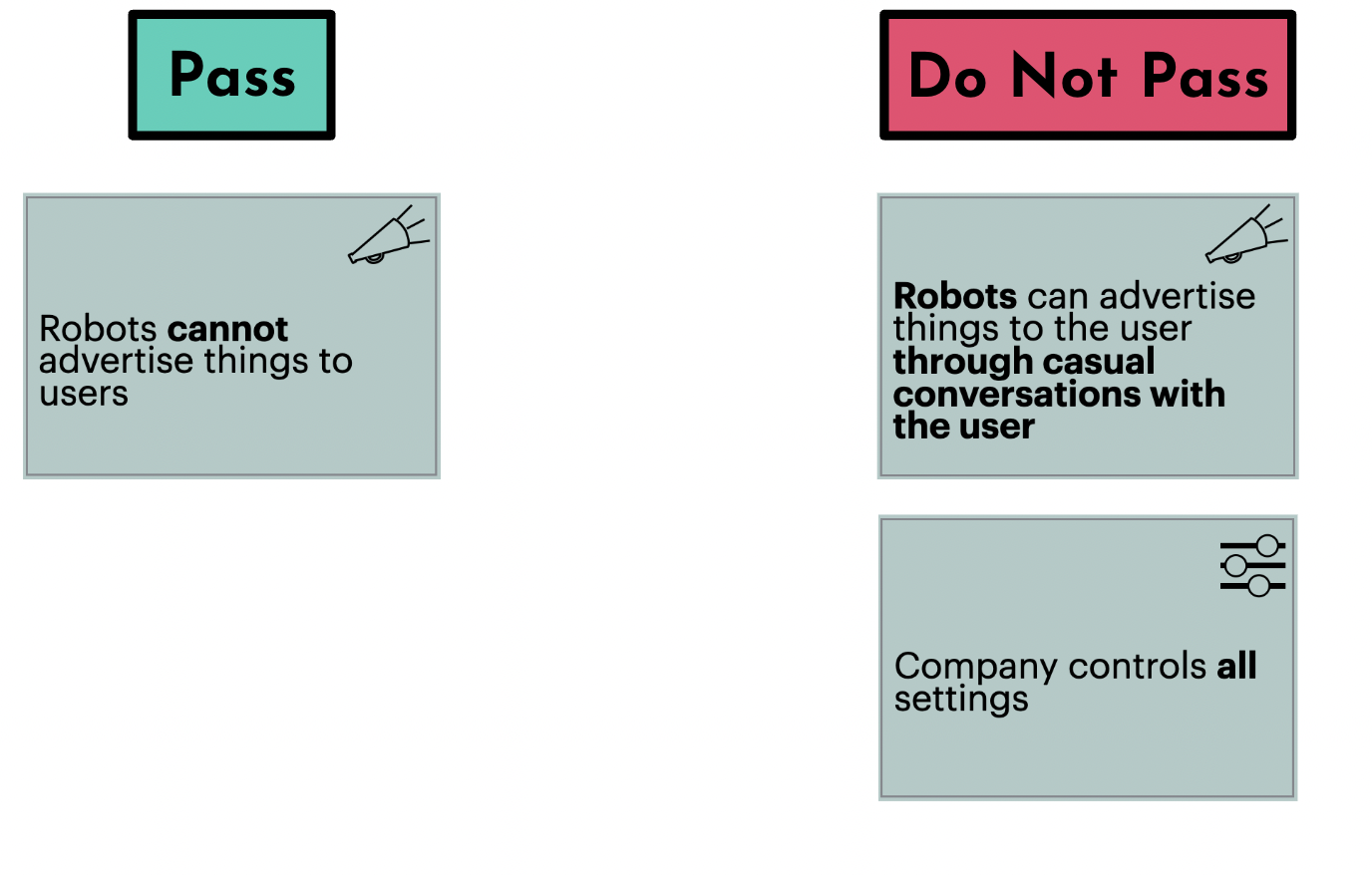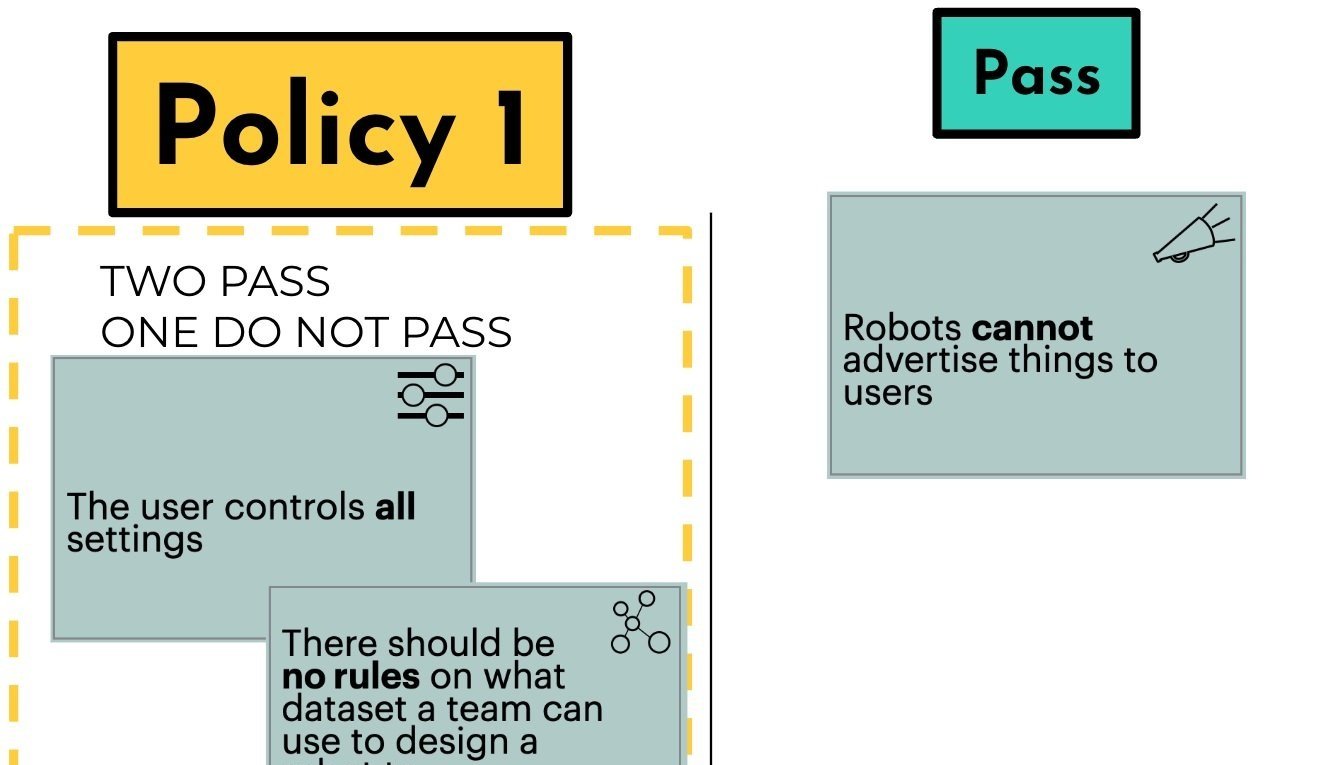Increasingly, devices designed with artificial intelligence (AI), such as robots or smart speakers, are entering people’s homes, workspaces, and environments. Many home robots are made to interact with users in an interpersonal way and can be designed to be socially persuasive. This translates to an increased need for policy around these devices surrounding dimensions including autonomy, bias, social persuasion, privacy, emotional deception, and transparency.
The Robot Policy Design Toolkit collaboratively created with Daniella DiPaola is designed to allow any generation to design and consider how we can develop policy for social robot technologies around nine ethic topics. The toolkit is situated around the context of you in your home considering how policy around robots may affect your environment and interactions with technology and other people.
Our project extends beyond participatory design of these devices to learn more about how people would design policy around these technology dimensions. Ultimately, through expanding the research to policy design, we can engage in participatory democracy in policy around these devices.
The investigations surrounding these topics and design of these devices must include people of all ages, allowing researchers to compare between generations. An intergenerational approach also includes children and older adults who are typically left out of the design conversation of these devices.
Publications from this project include:
DiPaola, D., Ostrowski, A.K., Spiegel, R., Darling, K. & Breazeal, C. 2022. Children's perspectives of advertising with social robots: A policy investigation. ACM/IEEE International Conference on Human-Robot Interaction (HRI) 2022, alt.HRI track. [link]
We were awarded an MIT Harold Horowitz Student Research Fund Grant to conduct this work.

